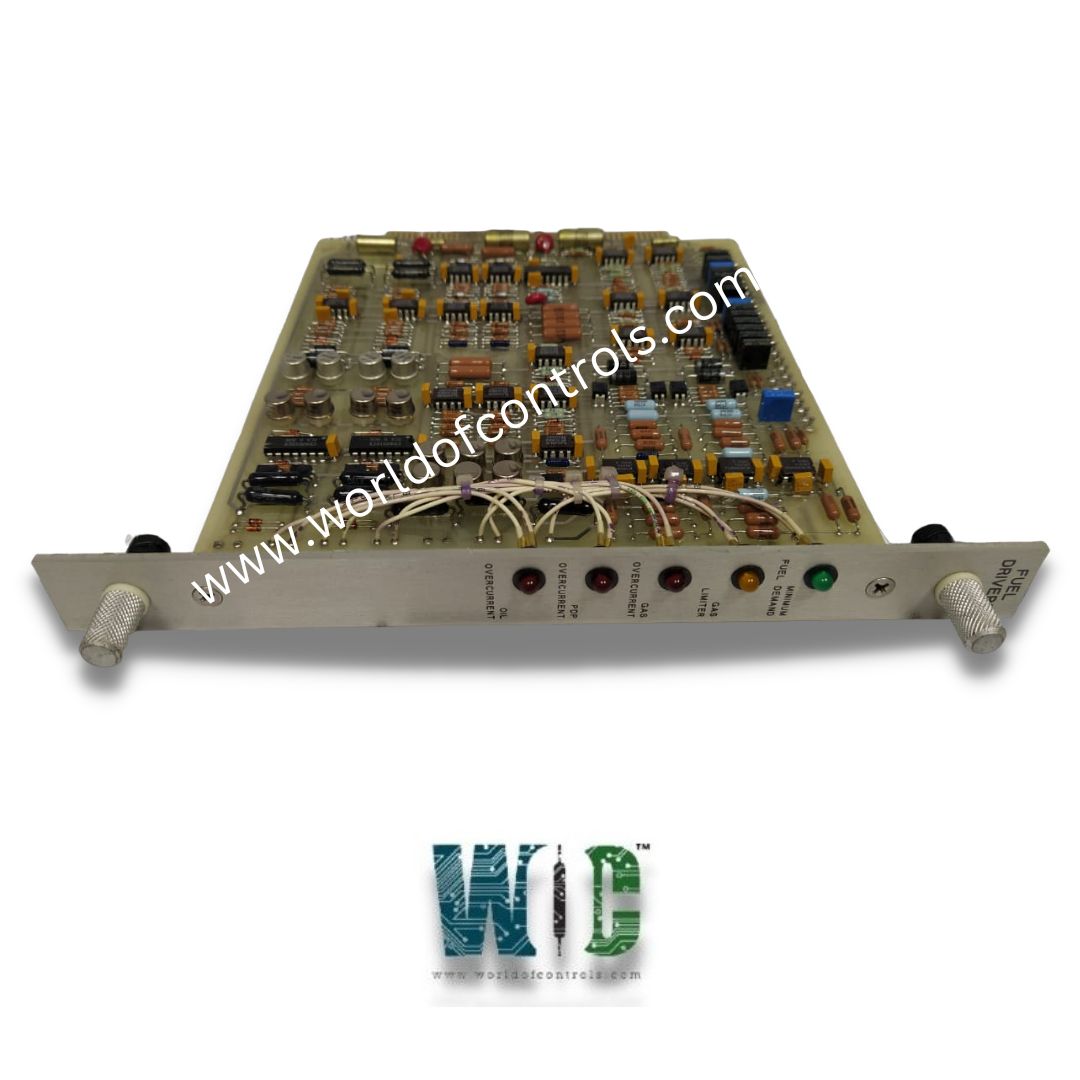
World Of Controls understands the criticality of your requirement and works towards reducing the lead time as much as possible.
5463-337 - Fuel Gas Monitor is available in stock which ships the same day.
5463-337 - Fuel Gas Monitor comes in UNUSED as well as REBUILT condition.
To avail our best deals for 5463-337 - Fuel Gas Monitor, contact us and we will get back to you within 24 hours.
SPECIFICATIONS:
Part Number: 5463-337
Manufacturer: Woodward
Product type: Fuel Gas Monitor
Software Support: Modbus RTU, Modbus ASCII
Size: 14in. x 11in. x 4in
Display: 24-character LEDs
Enclosure Type: NEMA 4X
Button: Emergency Stop
Input Voltage: 24VDC
Availability: In Stock
Country of Manufacture: United States (USA)
FUNCTIONAL DESCRIPTION:
5463-337 is a Fuel Gas Monitor manufactured and designed by Woodward as part of the 5400 Series used in Turbine Control Systems. A fuel gas monitor is a device designed to detect and monitor the presence of fuel gases in the environment. Fuel gases can include natural gas, propane, methane, hydrogen, and other flammable gases. These monitors are crucial for various applications to ensure safety, prevent leaks, and protect against potential explosions or fires. Key features and functions of a fuel gas monitor may include:
Gas Detection: The primary function of a fuel gas monitor is to detect the presence of fuel gases in the surrounding area. It uses sensors that can respond to specific gas types and concentrations.
Alarm System: Fuel gas monitors are equipped with alarm systems that can trigger audible and visual alarms when gas levels exceed predetermined thresholds. This alerts individuals to take appropriate action, such as evacuating the area or shutting off gas sources.
Gas Concentration Display: Many monitors have a digital or analog display that shows the current concentration of the detected gas, allowing users to monitor changes in real-time.
Data Logging: Some advanced models can log gas concentration data over time, providing a historical record for analysis and compliance reporting.
Remote Monitoring: In industrial settings or large facilities, fuel gas monitors may be integrated into a centralized monitoring system that allows for remote monitoring and control.
Calibration and Maintenance: Regular calibration and maintenance are essential to ensure accurate and reliable performance. Users should follow manufacturer recommendations for maintenance schedules.
Explosion-Proof Design: In hazardous environments, fuel gas monitors may have explosion-proof or intrinsically safe designs to prevent sparks or explosions.
Compatibility: Fuel gas monitors are typically designed to work with specific types of fuel gases, so it's essential to choose a monitor that suits the intended gas detection needs.
Portable vs. Fixed: Fuel gas monitors can be portable, handheld devices used for spot-checking gas levels, or fixed, permanently installed units for continuous monitoring.
Applications for fuel gas monitors vary widely and include:
WOC has the largest stock of Woodward 5400 series Turbine Control System Replacement Parts. We can also repair your faulty boards. WORLD OF CONTROLS can also supply unused and rebuilt backed-up with a warranty. Our team of experts is available round the clock to support your OEM needs. Our team of experts at WOC is happy to assist you with any of your automation requirements. For pricing and availability on any parts and repairs, kindly get in touch with our team by phone or email.
Where are fuel gas monitors used?
Fuel gas monitors are used in various settings, including residential and commercial buildings, industrial facilities, oil and gas operations, laboratories, chemical plants, and refineries. They are deployed wherever there is a risk of fuel gas leaks.
What are the key features of a fuel gas monitor?
Important features include gas detection capabilities, alarm systems, gas concentration displays, data logging, remote monitoring options, calibration and maintenance requirements, explosion-proof designs for hazardous environments, and compatibility with specific gas types.
How often should I calibrate a fuel gas monitor?
Calibration frequency depends on the manufacturer's recommendations and the specific monitor's usage. Typically, gas monitors should be calibrated regularly, often on a monthly or quarterly basis, to ensure accurate readings.